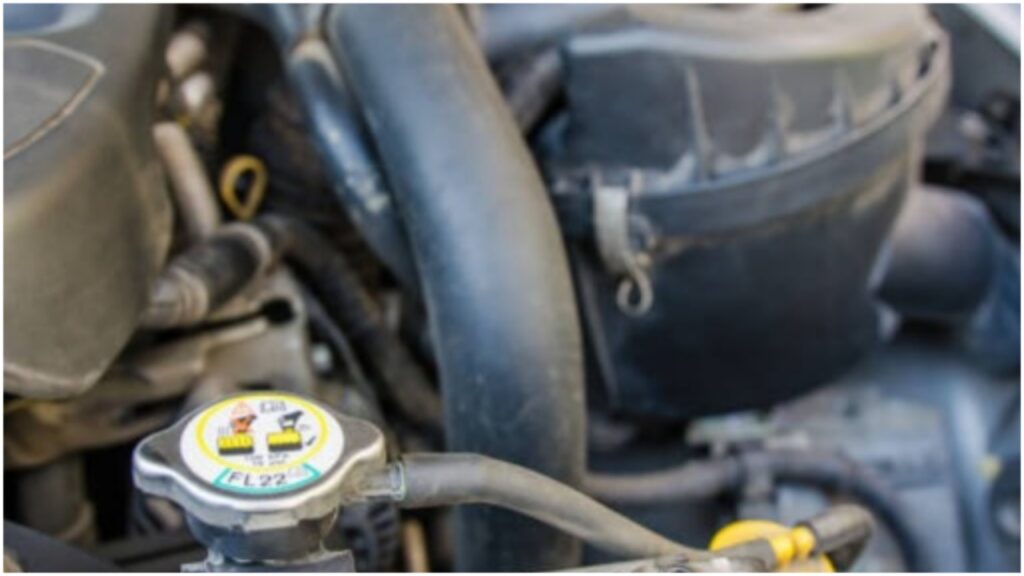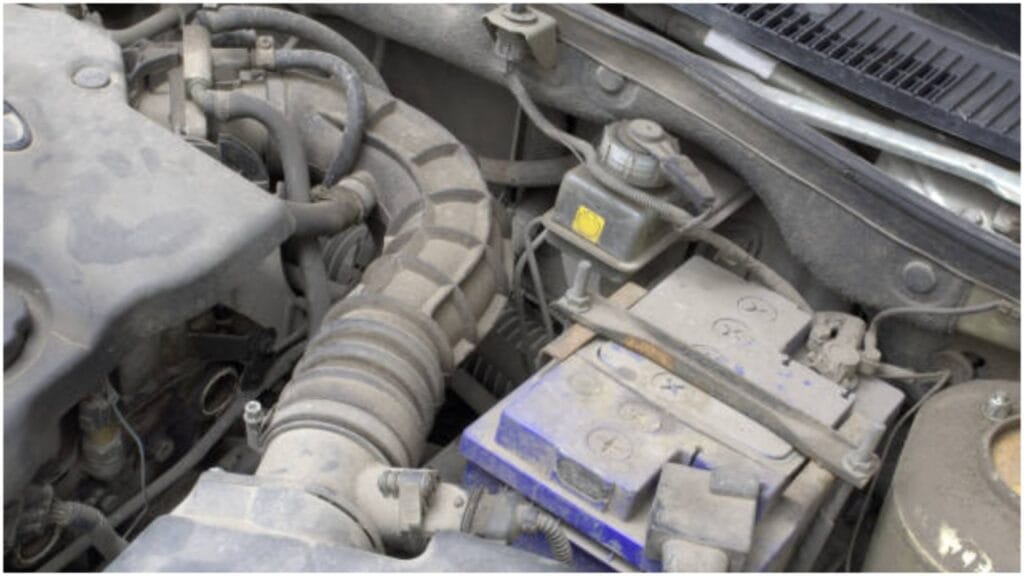Yes, you can technically drive with a vacuum leak, but it’s wrong. A vacuum leak occurs when air enters the engine outside the standard air intake path. This can cause the engine to run poorly, leading to rough idling, hesitation, and reduced power. In some cases, the engine might even stall.
If the vacuum leak is small, the car might still run, but the performance will be noticeably worse. A vacuum leak can trigger the check engine light. The engine control unit (ECU) may detect the discrepancy in air-fuel ratio and send a warning.
If the leak is not fixed over time, it could lead to more serious engine problems, such as fuel injectors or sensor damage. You might also experience decreased fuel efficiency because the engine compensates for the extra air using more fuel.
If you notice signs of a vacuum leak, it’s best to address the issue soon. Driving with a vacuum leak can also cause unnecessary wear on engine components, which could be costly. Let’s find out more details.
What Happens When You Drive With a Vacuum Leak?
You’ll first notice that your engine isn’t as smooth as usual. You may feel a slight hiccup in acceleration or a rough idle at a stoplight.
The engine control unit (ECU) struggles to balance the air-fuel mixture. When more air is coming in than expected, the mix gets thrown off.
If your vacuum leak is bad enough, you might hear strange noises—like a hissing sound from under the hood. That’s the sound of air escaping where it shouldn’t be—like the engine is wheezing for air.
The Hidden Damage: It’s Not Just About Power
You might think, “Hey, I’m still getting from Point A to Point B. What’s the harm?” The truth is, over time, that small vacuum leak can cause a cascade of issues. Your engine might start to run lean (not enough fuel compared to air), and that leads to things like:
Decreased fuel efficiency:
Your engine is working harder to compensate for the extra air, which means it’s burning more fuel than it should.
Unpredictable idling:
You might notice the engine stumbling when you come to a stop. It could even stall on you at a red light.
Poor acceleration:
Your car may struggle to pick up speed or feel sluggish when you push the pedal.
Increased emissions:
When the engine burns fuel inefficiently, you’ll likely notice your exhaust smelling worse or your check engine light flashing.
But here’s the kicker—your car’s sensors are working overtime to make sense of what’s going wrong. This can lead to more wear on things like the oxygen sensor, mass airflow sensor, or even the fuel injectors. Replacing these parts can cost much more than just fixing the vacuum leak in the first place.
Is It Safe to Drive With a Vacuum Leak?

You can drive with a vacuum leak. But that doesn’t mean it’s a good idea. Imagine trying to do a high-speed chase while your car’s engine is out of breath. You could keep going for a while, but eventually, it’ll catch up with you.
If the leak is small, you can get away with driving it for a bit. But you’re not doing your car any favors. And the longer you ignore it, the worse it gets.
The vacuum leak might initially seem insignificant, but the damage comes when it starts affecting other parts of your engine.
Signs You’ve Got a Vacuum Leak
It’s not like you can pop the hood and spot it immediately (unless it’s obvious). But there are signs you can look out for:
Rough Idling:
A vacuum leak disrupts the air-fuel balance, making the engine idle poorly.
Hissing Noise:
If you hear a hissing sound coming from your engine bay, that’s air escaping somewhere it shouldn’t be.
Check Engine Light:
If the ECU detects a problem, it’ll likely light up the dashboard with the check engine light.
These aren’t just minor annoyances—they’re clues. Your car is telling you something’s wrong. Don’t wait until you’re stuck on the side of the road or dealing with a hefty repair bill.
How Bad Can It Get?
Let’s talk about the long-term effects. If you keep driving with a vacuum leak, it could eventually lead to:
Damage to Other Engine Components:
That air-fuel imbalance could lead to problems with your fuel injectors, spark plugs, or even your catalytic converter.
Overheating:
The engine could run hotter than usual as it compensates for the extra air. Overheating is one of those things you don’t want to deal with—it can cause severe engine damage.
Complete Engine Failure:
In the worst-case scenario, continued neglect of a vacuum leak could lead to complete engine failure.
Fixing the Vacuum Leak
How do you fix it?
The first step is identifying the leak. You can try the old-school method of spraying carburetor cleaner or a similar aerosol around suspected areas. You’ve found your culprit if the engine revs up when you spray it on a crack or leak.
From there, you’ll need to replace the damaged hose, gasket, or whatever is causing the leak. It’s a fairly straightforward fix for most DIY mechanics, but if you’re unsure, a professional mechanic can pinpoint the issue and resolve it quickly.
Why Vacuum Leaks Are Hard to Detect

Vacuum leaks can be tricky to detect, especially if they’re small. Often, they don’t throw a glaring warning light on your dashboard.
Instead, they sneak up on you, causing subtle changes in the car’s behavior. Unlike a flat tire or an oil leak, which are easier to spot, a vacuum leak might only show its true colors when driving.
The Engine’s Struggle
Imagine trying to breathe with a blocked nose. You can still breathe, but it’s more challenging, and you won’t get the same amount of oxygen. The same thing happens when there’s a vacuum leak.
The engine is still running, but it’s working harder than it should to compensate for the imbalance. This added strain affects the engine’s performance and longevity.
The Hidden Costs of Ignoring It
These “small” issues can lead to a mountain of unexpected costs. For example, a vacuum leak could slowly damage your fuel system, resulting in poor combustion. This leads to misfires, which might seem like a minor issue at first, but over time, it could degrade your fuel injectors and lead to a more expensive repair.
Even worse, it could result in you needing to replace more significant engine components like the intake manifold or throttle body. What started as a tiny vacuum leak can quickly snowball into a pricey problem.
Can a Vacuum Leak Affect Other Car Systems?
A vacuum leak can affect the engine, but the issue can also affect other car systems. Take your brake system, for example.
Many cars use vacuum-assisted brakes, which rely on the engine’s vacuum pressure to provide braking force.
If there’s a vacuum leak, your brakes might feel less responsive or require more effort to engage. This isn’t just an inconvenience—it can make driving unsafe.
DIY Fix or Professional Help?
If you’re a DIY person, fixing a vacuum leak sounds like an easy weekend project. In many cases, it can be. A quick visual inspection for cracked hoses or loose connections could lead to a simple fix.
All it takes is replacing a hose or tightening a clamp. Diagnosing and fixing a vacuum leak can be more complicated than it seems. If you don’t know your way around, let a mechanic handle your car.
The Long-Term Effects on Emissions
A vacuum leak doesn’t just affect how your car drives—it can also impact your emissions. A malfunctioning engine due to a vacuum leak can lead to incomplete combustion.
This means your car is releasing more harmful gases into the environment. If you care about keeping your vehicle green, consider this. An inefficient engine burns more fuel than necessary, contributing to air pollution.
It’s All About Prevention

The good news is that vacuum leaks are preventable. Regular maintenance is key. The rubber hoses and gaskets that maintain your engine’s vacuum system naturally wear out over time.
So, replacing them as part of your routine maintenance plan can prevent unexpected leaks down the line. Keep an eye on your car’s performance and be proactive about replacing hoses and parts before they crack or fail.
Why You Shouldn’t Wait Until It’s Too Late
If you’re thinking, “I’ll deal with the vacuum leak next month,” you could be digging yourself a deeper hole. The longer you let the problem linger, the more damage it can cause. What might start as a minor issue could escalate into something more serious?
For example, a small leak can gradually affect the engine’s timing, throwing off how it fires and causing misfires or even engine knock.
If your engine starts knocking, you’ve got a big problem. Ignoring the signs doesn’t make the issue disappear; it worsens it.
FAQ’s
Where do vacuum leaks occur?
Vacuum leaks sneak into places you least expect. They often happen in cracked or worn-out hoses. The intake manifold is another common culprit, especially where gaskets fail.
Throttle bodies can develop leaks around seals. Brake boosters and PCV valves are also prone to trouble. Leaks even appear around the base of the carburetor or throttle body spacers.
A loose or damaged cap on the vacuum reservoir can also let air escape. These leaks disrupt the air-fuel mix, causing rough idling, poor acceleration, and stalling. If your engine feels off, it could be a tiny crack letting air through.
Vacuum leak smoke test DIY?
A DIY smoke test for a vacuum leak can be a great way to find the source of the problem without guessing. The idea is simple: you introduce smoke into the intake system, and you’ve found the leak wherever the smoke escapes.
First, you’ll need a smoke machine, which can be bought or made at home using basic supplies like a smoke-generating substance, a container, and some flexible tubing. Start by disconnecting the intake hose or air filter assembly, then seal off the intake manifold to ensure the smoke stays in.
Next, connect your smoke machine to the intake system and start it. As the smoke fills the system, watch for any escaping smoke—it will escape from the vacuum leak.
Leaks commonly occur around hoses, gaskets, or the intake manifold. Once you locate the leak, you can repair it by replacing damaged hoses, tightening clamps, or sealing gaskets.
What does a vacuum reservoir do on a car?
A vacuum reservoir in a car acts like a storage tank for vacuum pressure. It stores the vacuum created by the engine and provides a backup source of vacuum for systems that rely on it. Many car systems, like power brakes, HVAC controls, and some emissions components, depend on vacuum pressure.
The engine’s vacuum system usually generates this pressure. Still, when the engine isn’t running at high RPM or during certain driving conditions, there might not be enough vacuum to keep these systems working smoothly. That’s where the vacuum reservoir comes in.
It stores an extra vacuum when needed, like when you apply the brakes or switch the air conditioning settings. Without a working vacuum reservoir, you might notice a drop in braking performance, especially when driving at low speeds or idle.
The reservoir ensures that vacuum-dependent systems continue to function consistently, even when the engine can’t provide a steady supply of vacuum. If the vacuum reservoir leaks or malfunctions, it can lead to issues like stiff brakes or unresponsive HVAC controls.
How does a vacuum reservoir work?
A vacuum reservoir is like a storage tank for vacuum pressure. It holds an extra vacuum created by the engine when it’s running. This stored vacuum is handy when the engine can’t produce enough, like during acceleration or heavy loads.
The reservoir keeps systems like power brakes, HVAC controls, and other vacuum-operated parts working smoothly. It’s usually metal or plastic and has check valves to trap the vacuum inside.
These valves prevent the vacuum from escaping when the engine is not creating it. Essentially, it’s a backup system that ensures consistent performance.
Conclusion
It’s tempting to put things like this on the back burner. Ignoring a vacuum leak isn’t just an annoying sound—it’s risking long-term damage to your car. So, if you’ve noticed any signs of a vacuum leak, don’t wait too long to address it.

